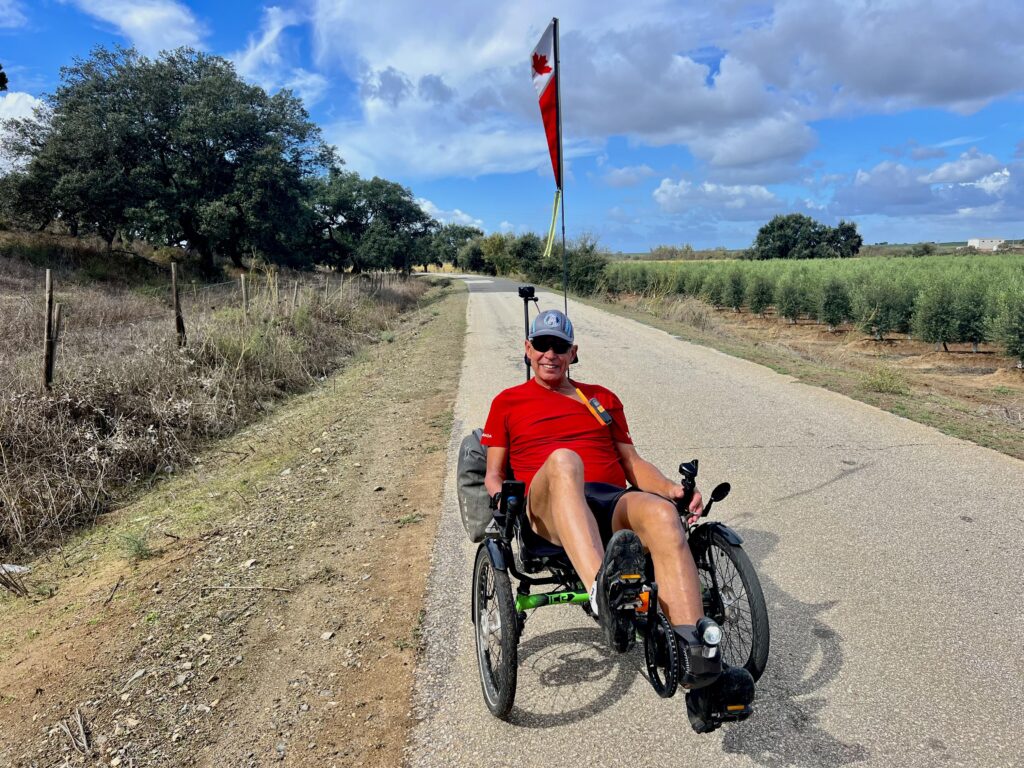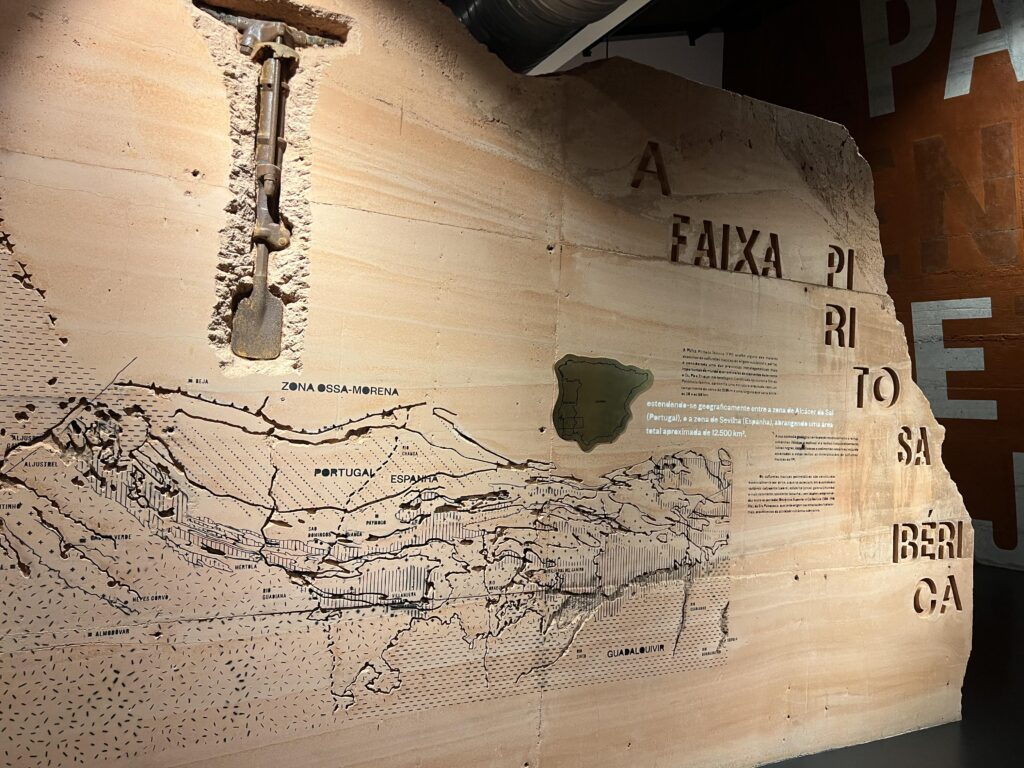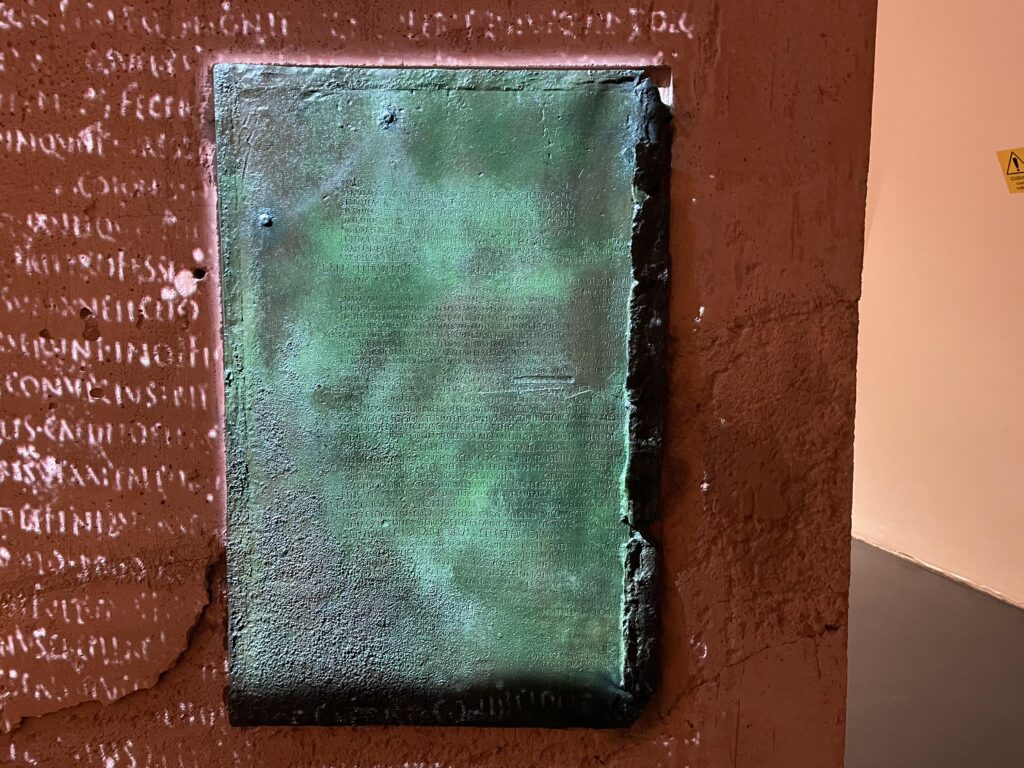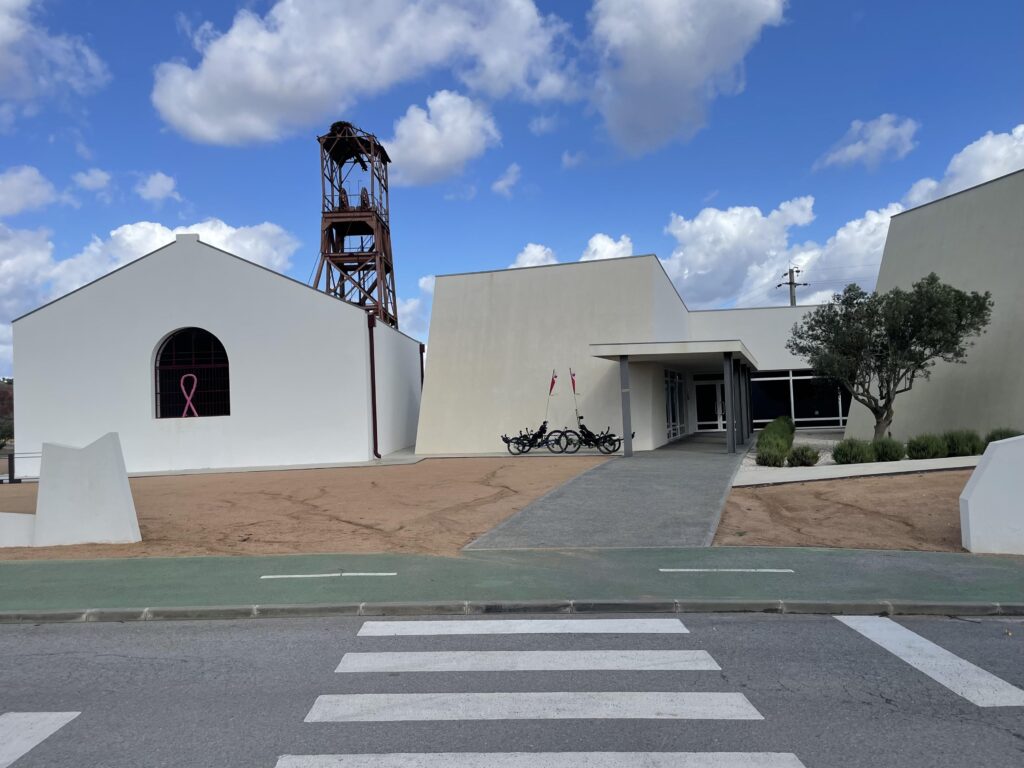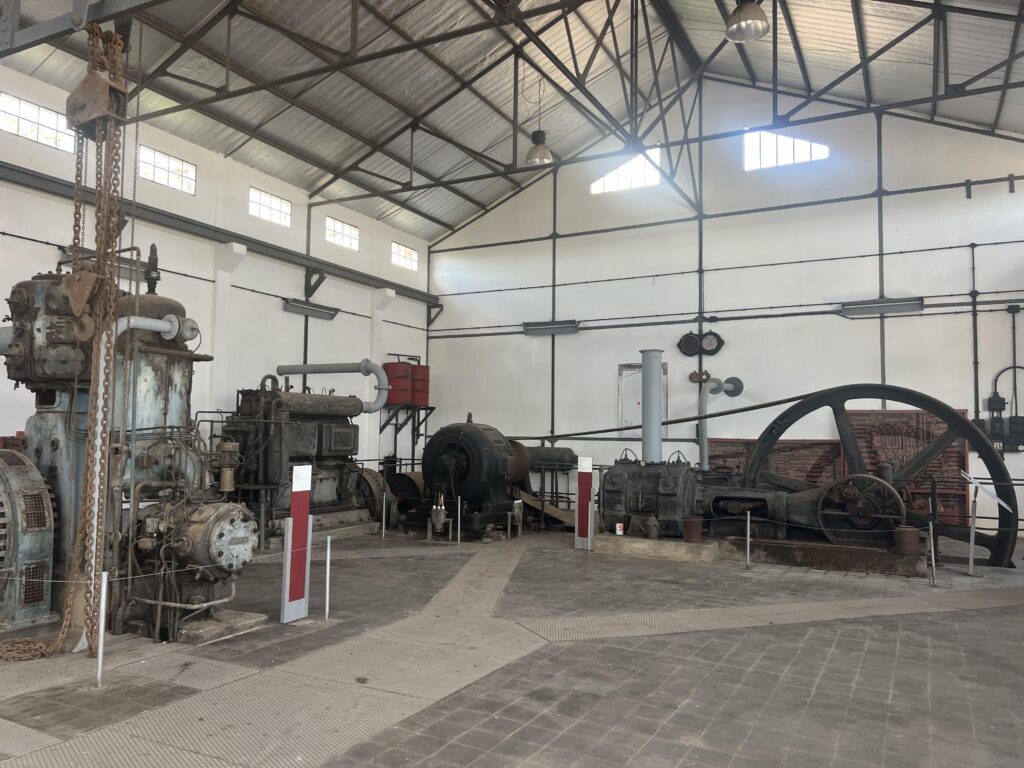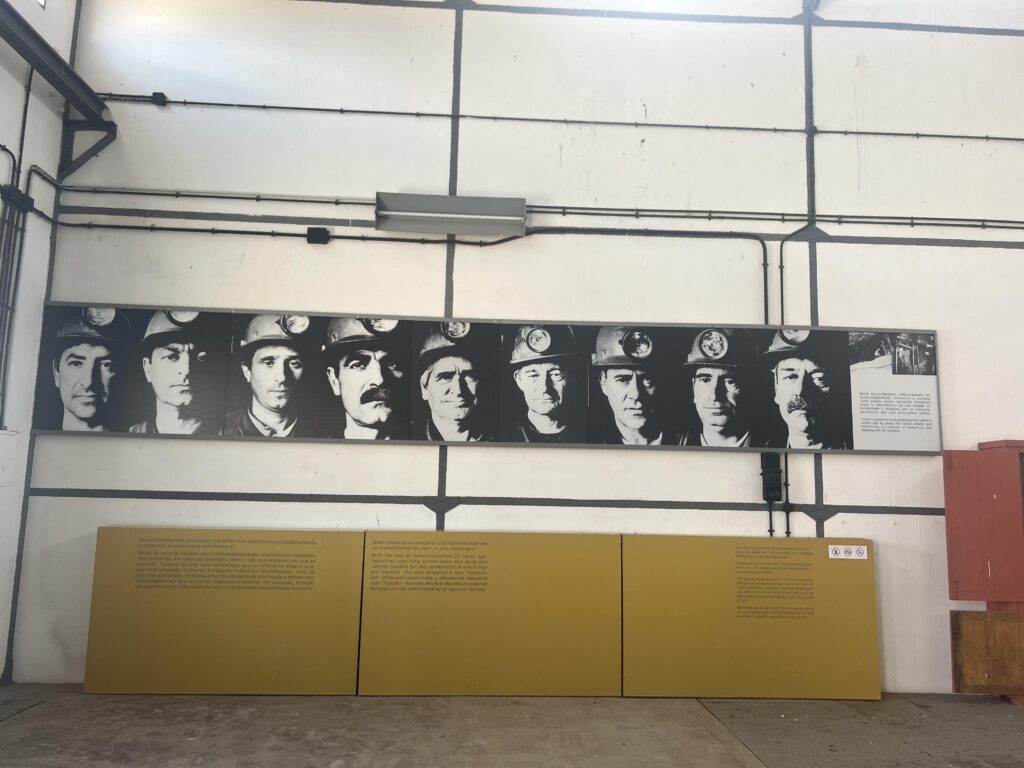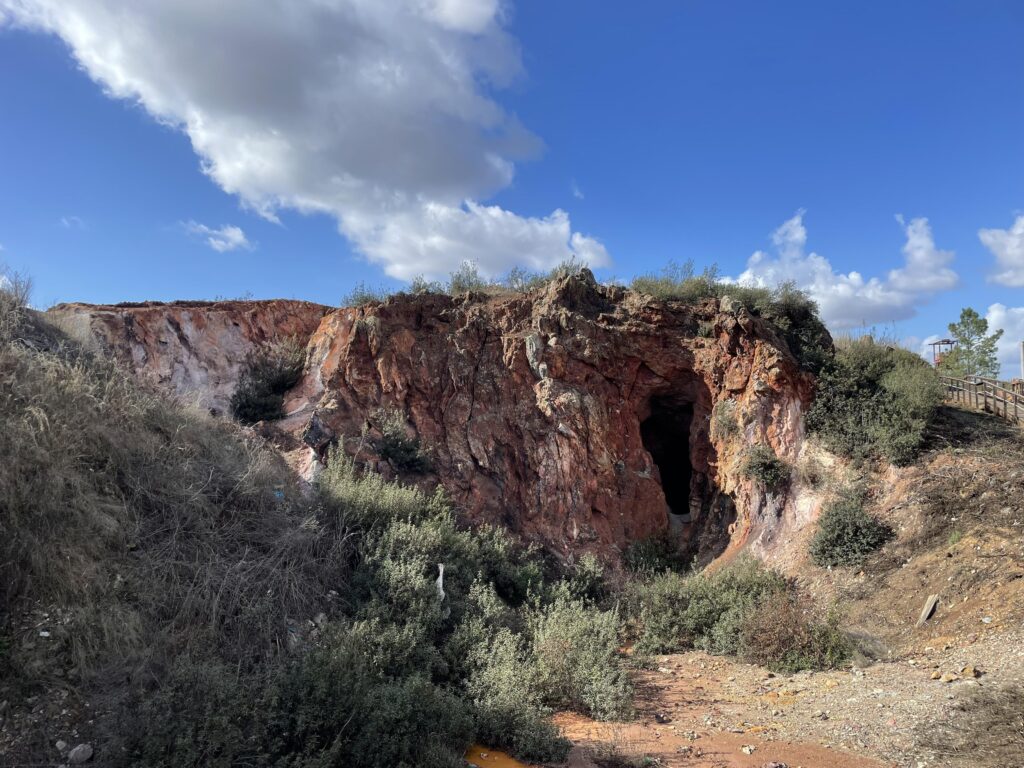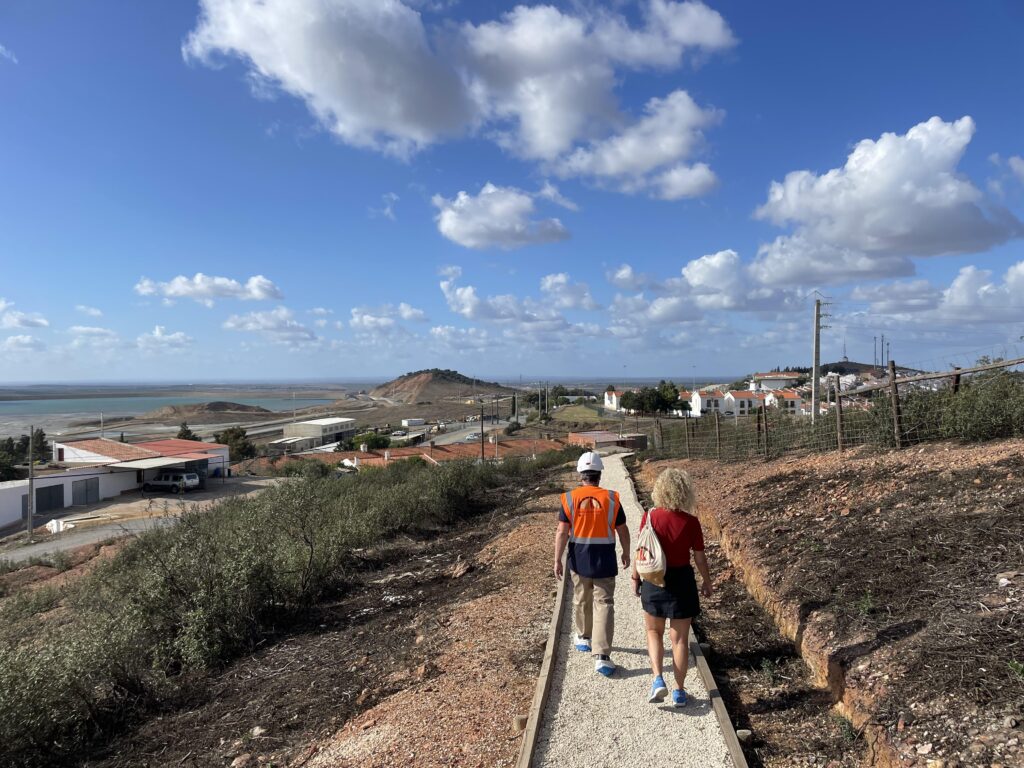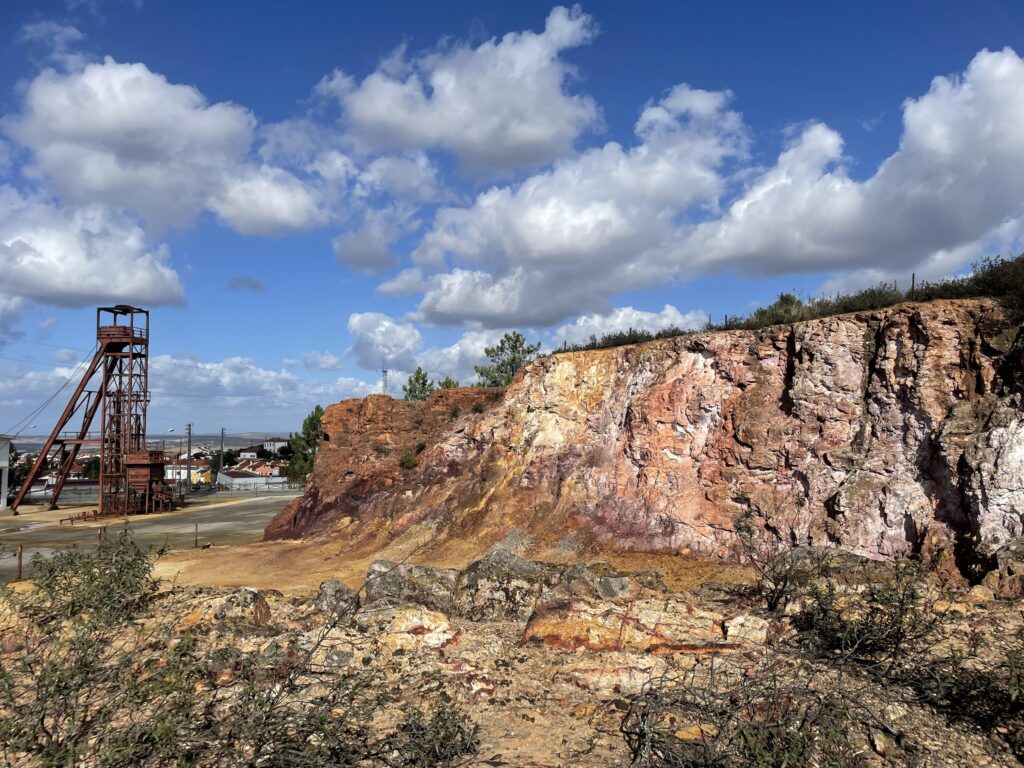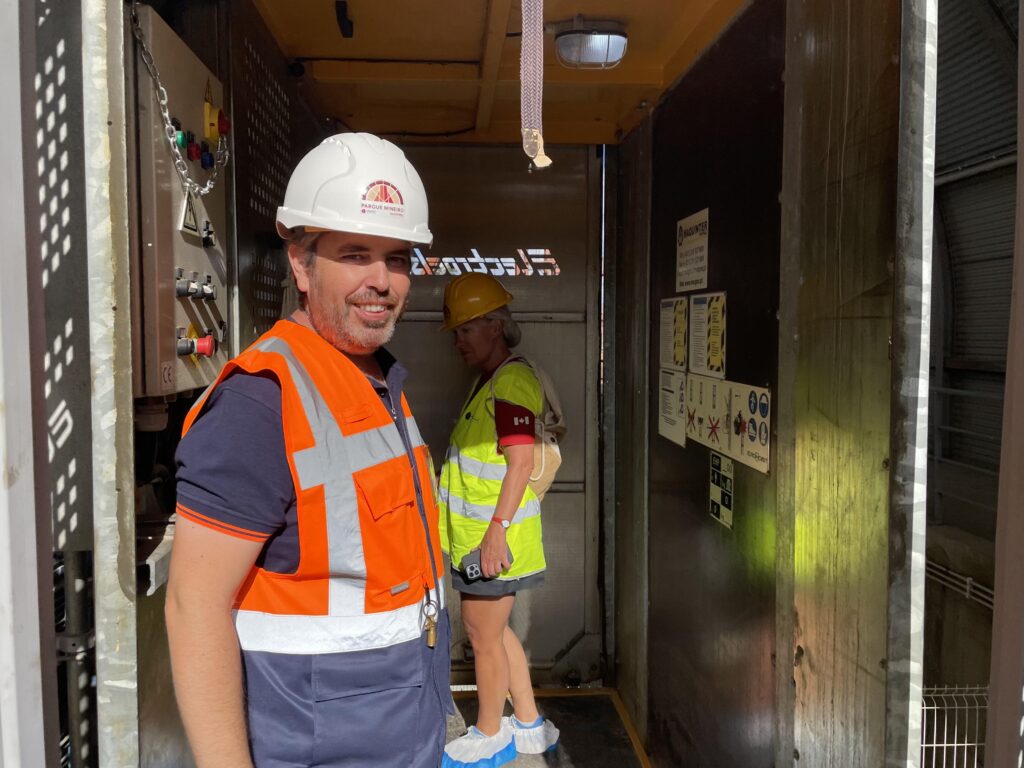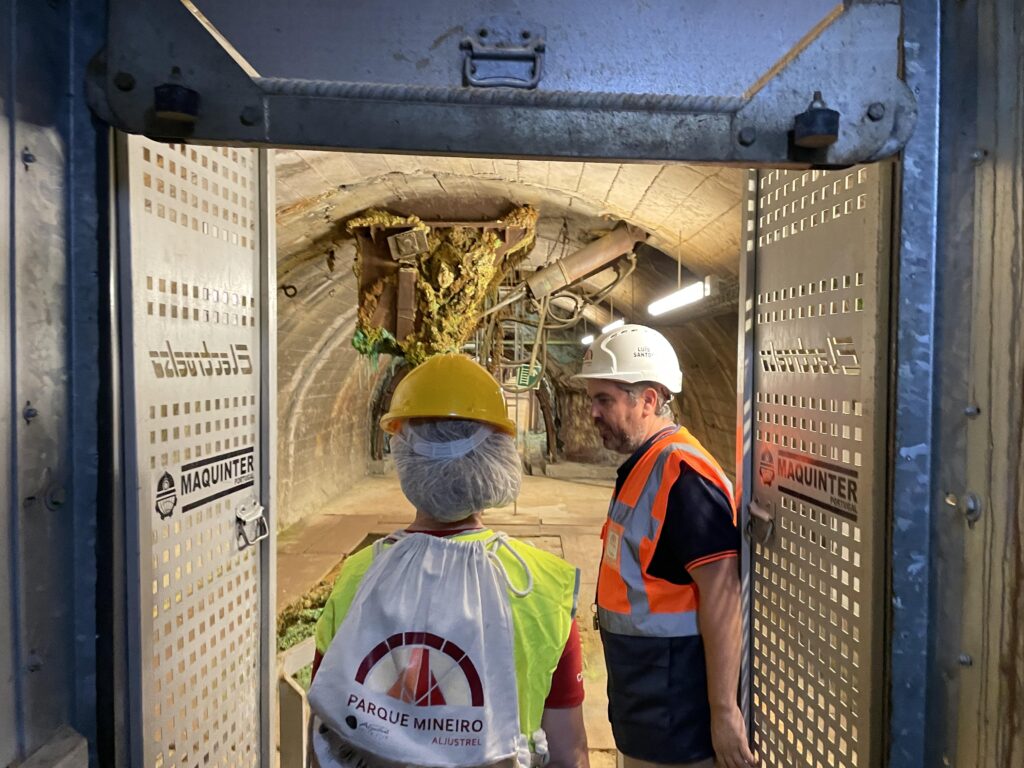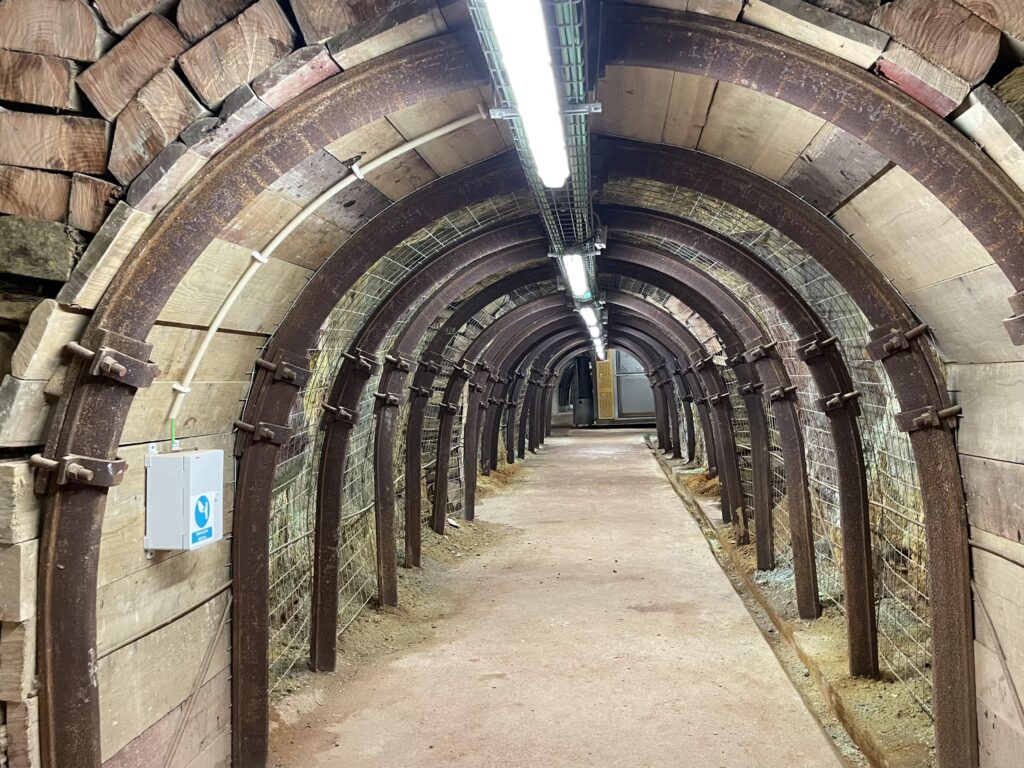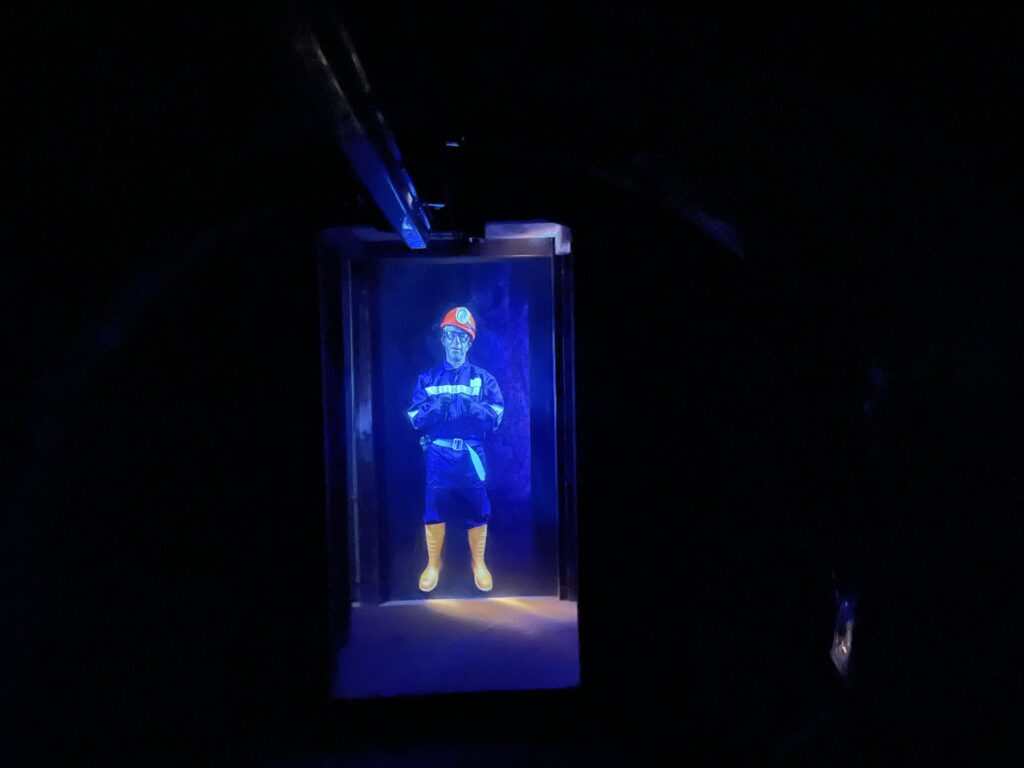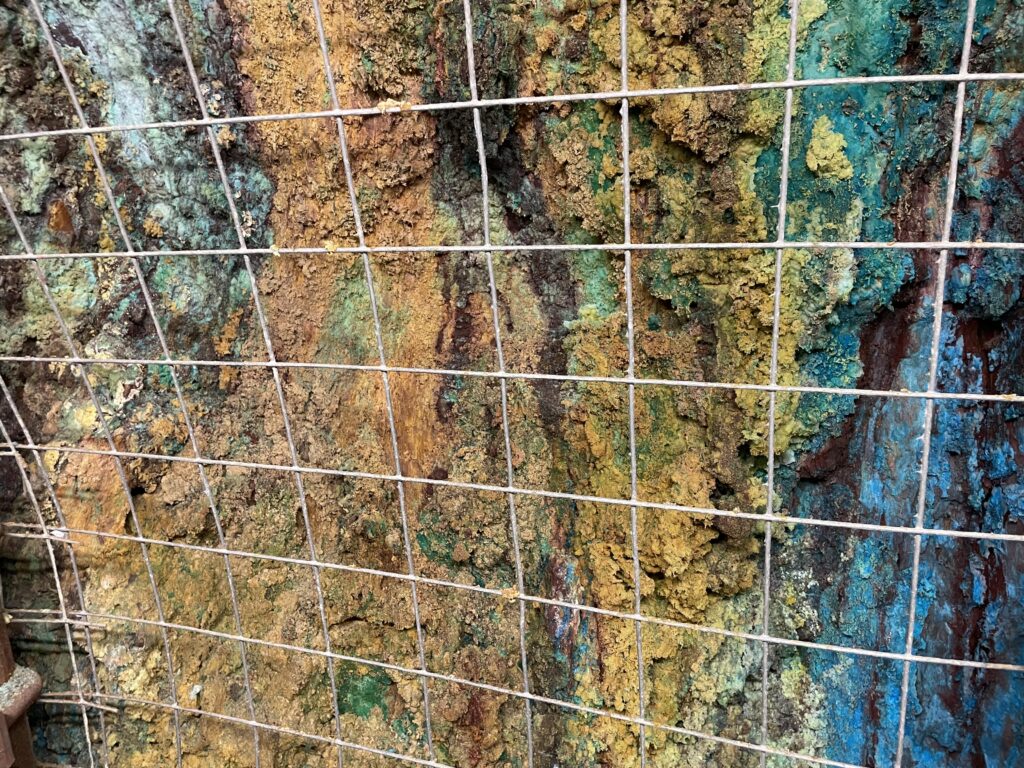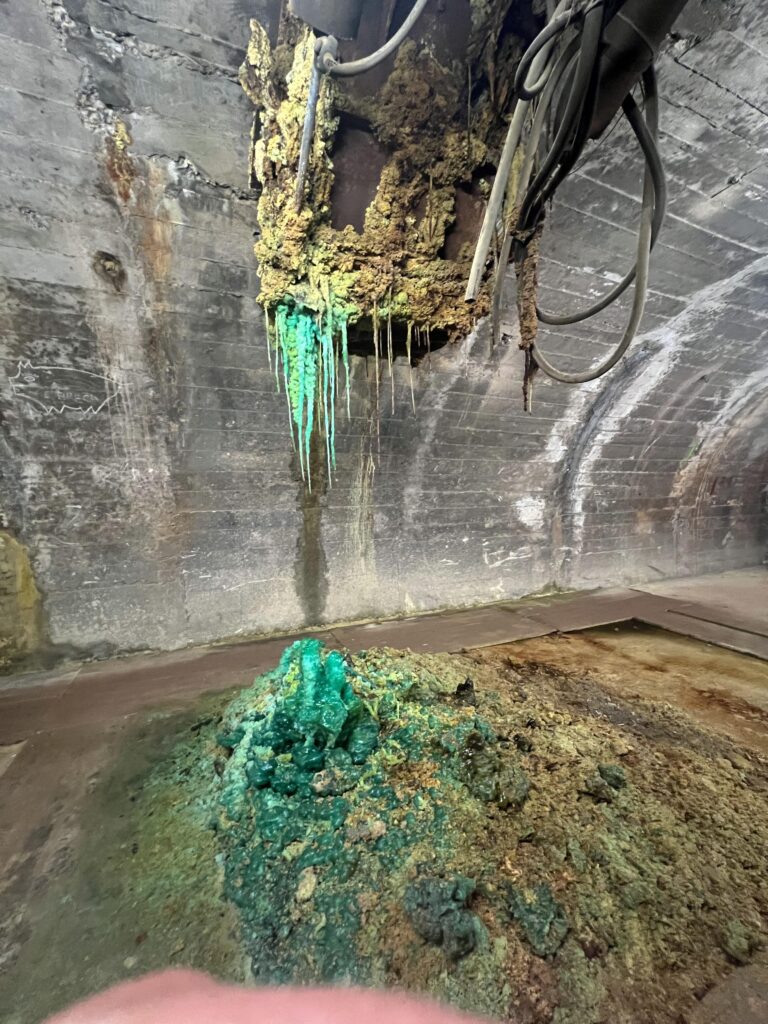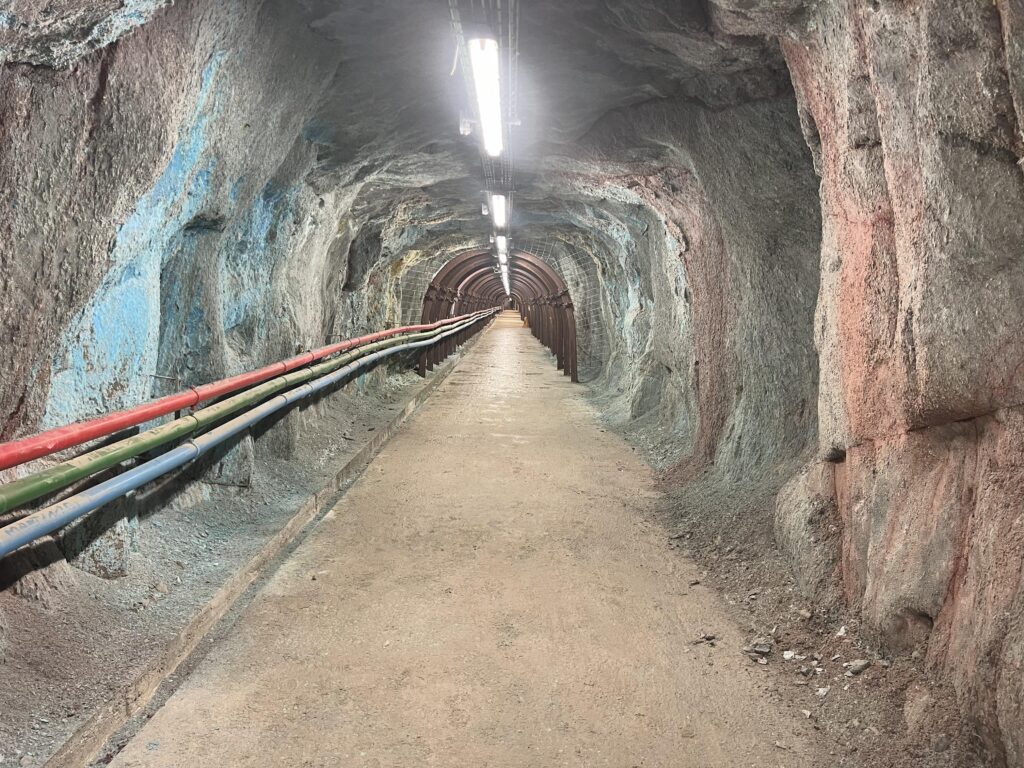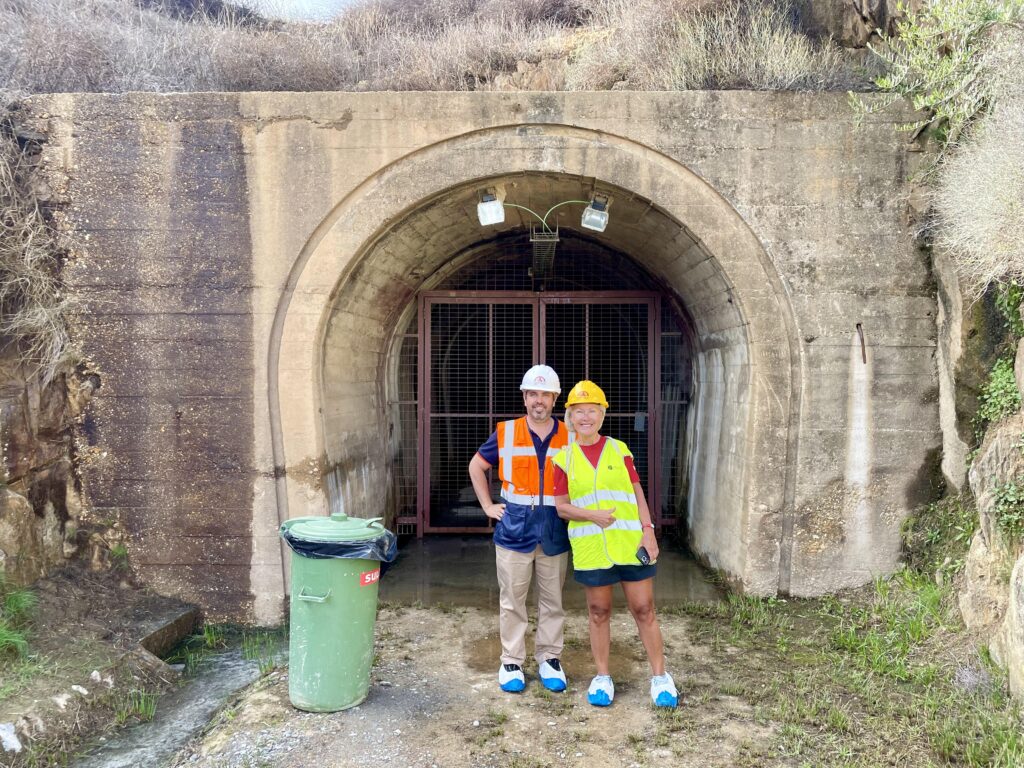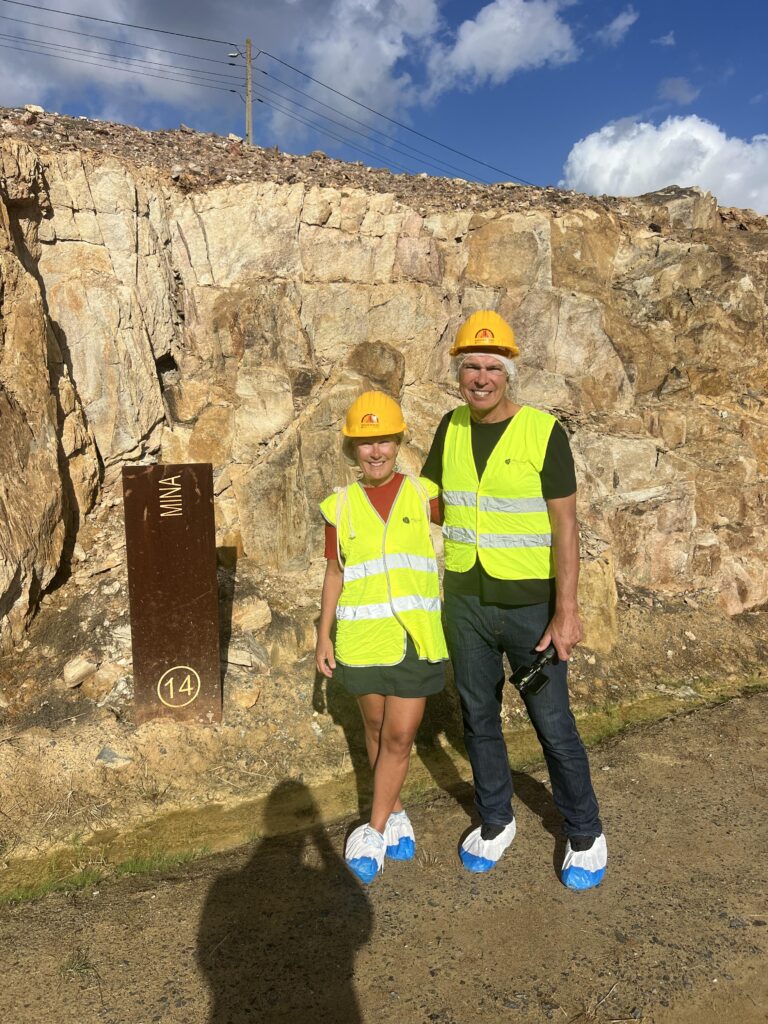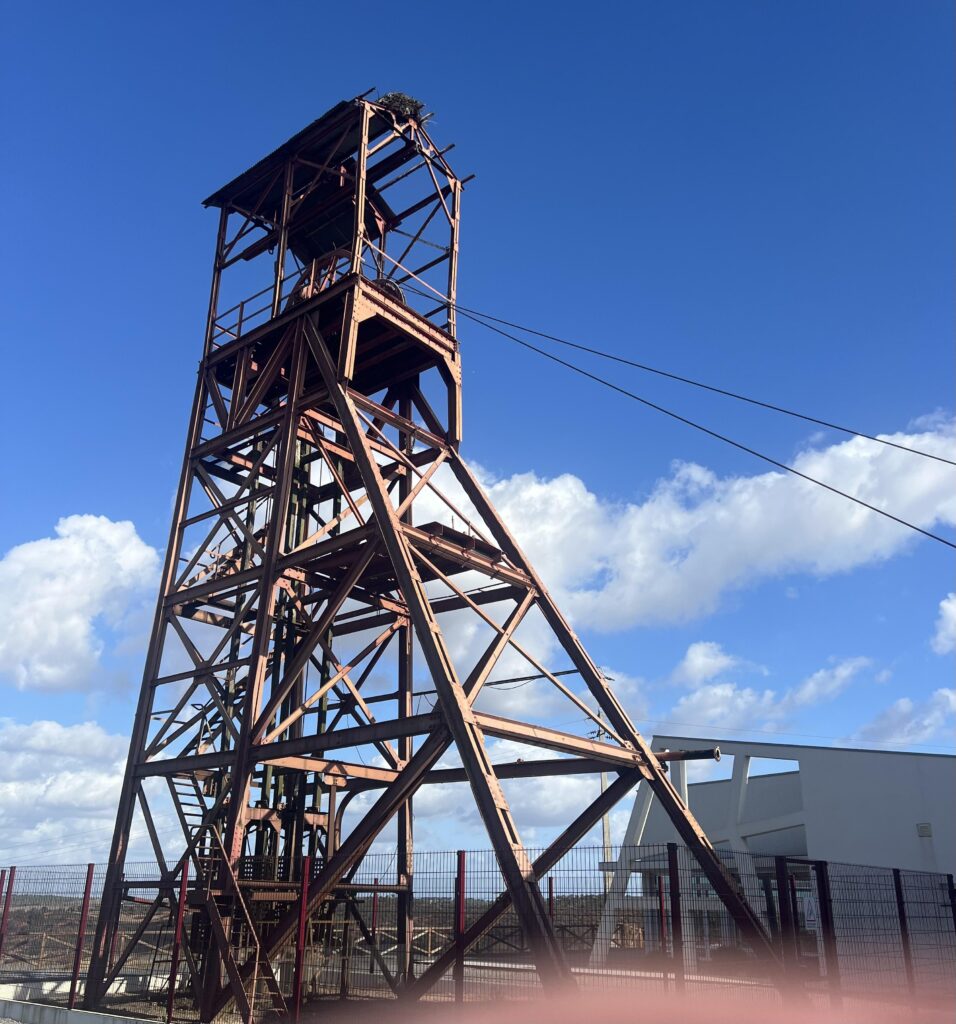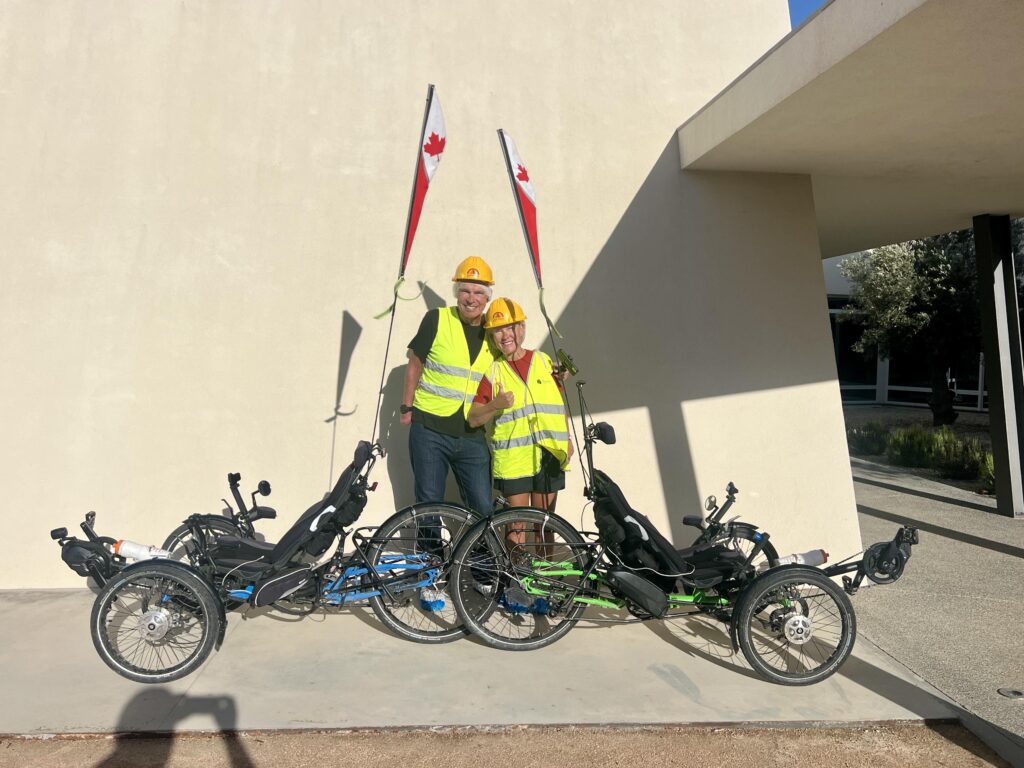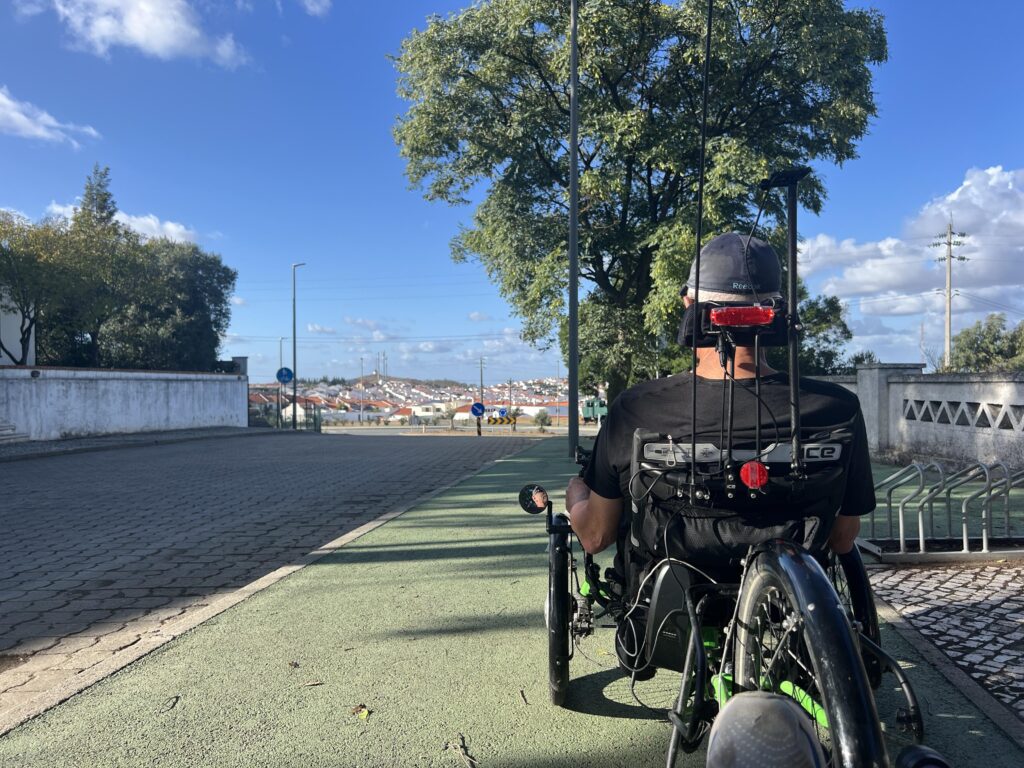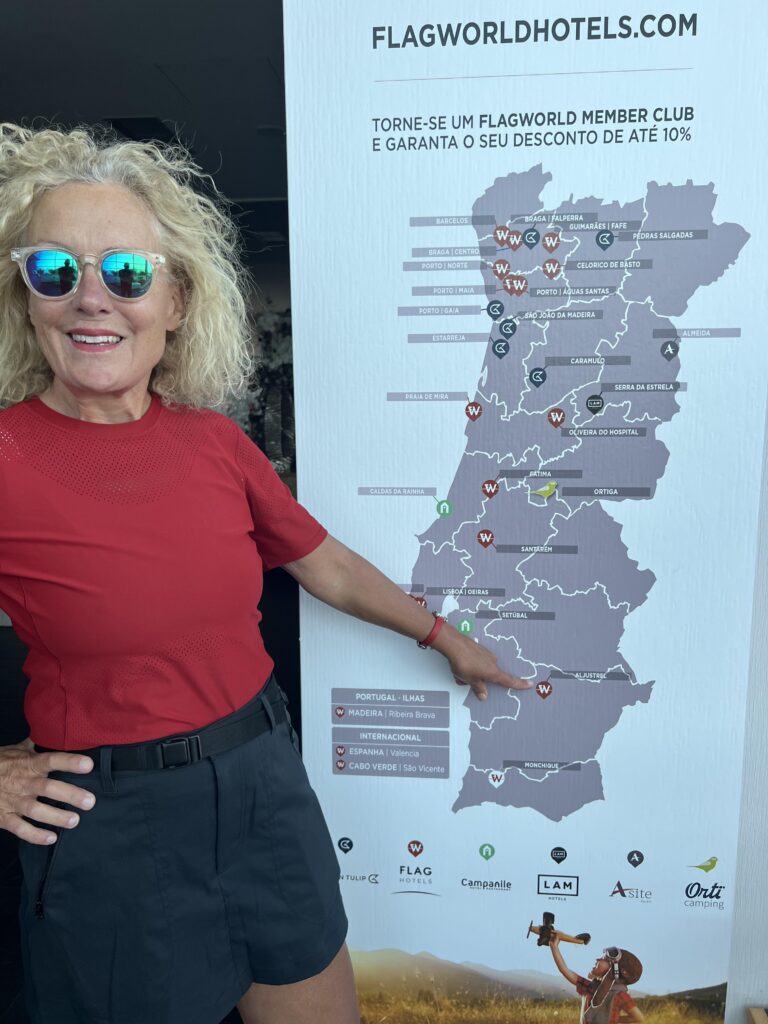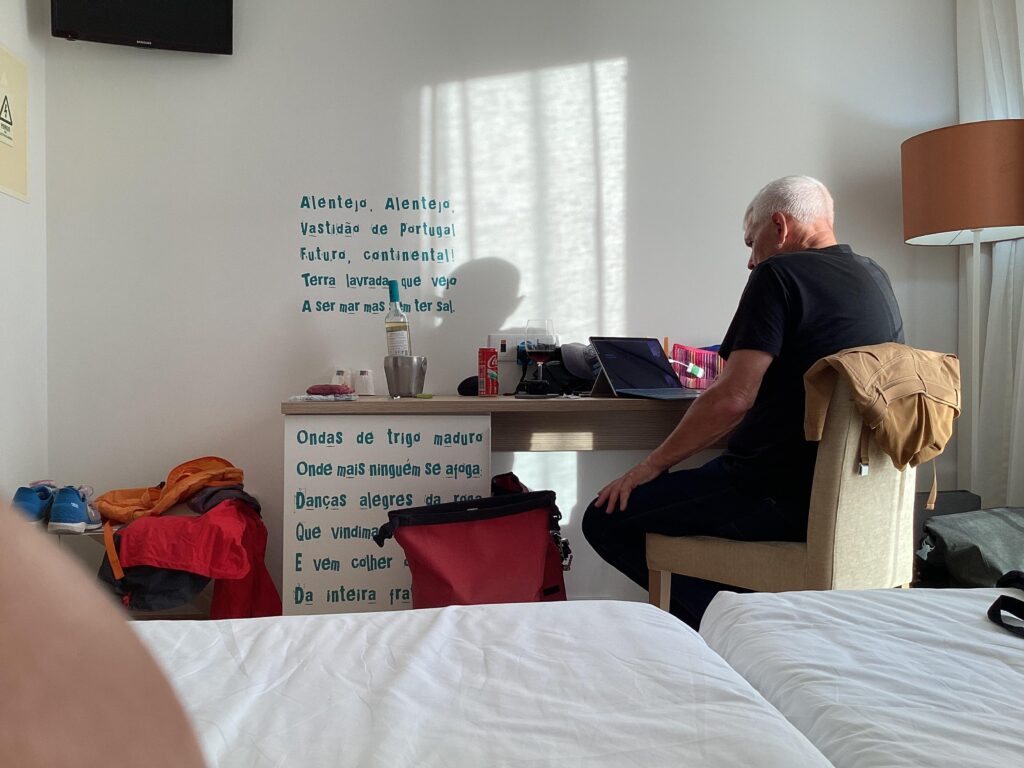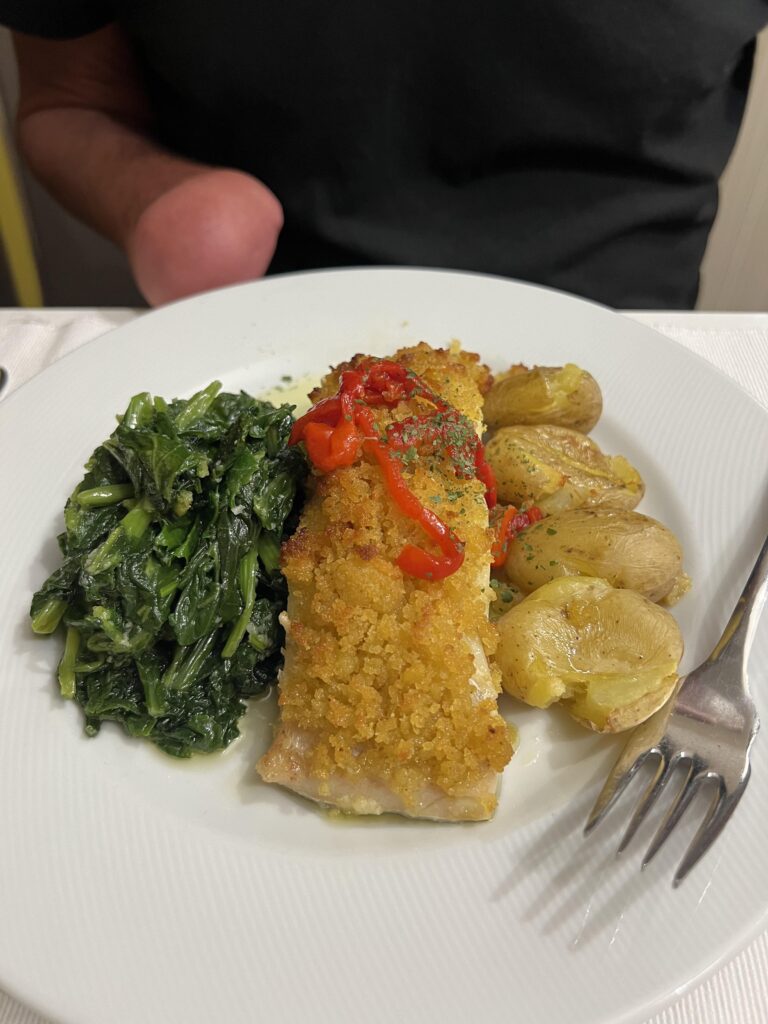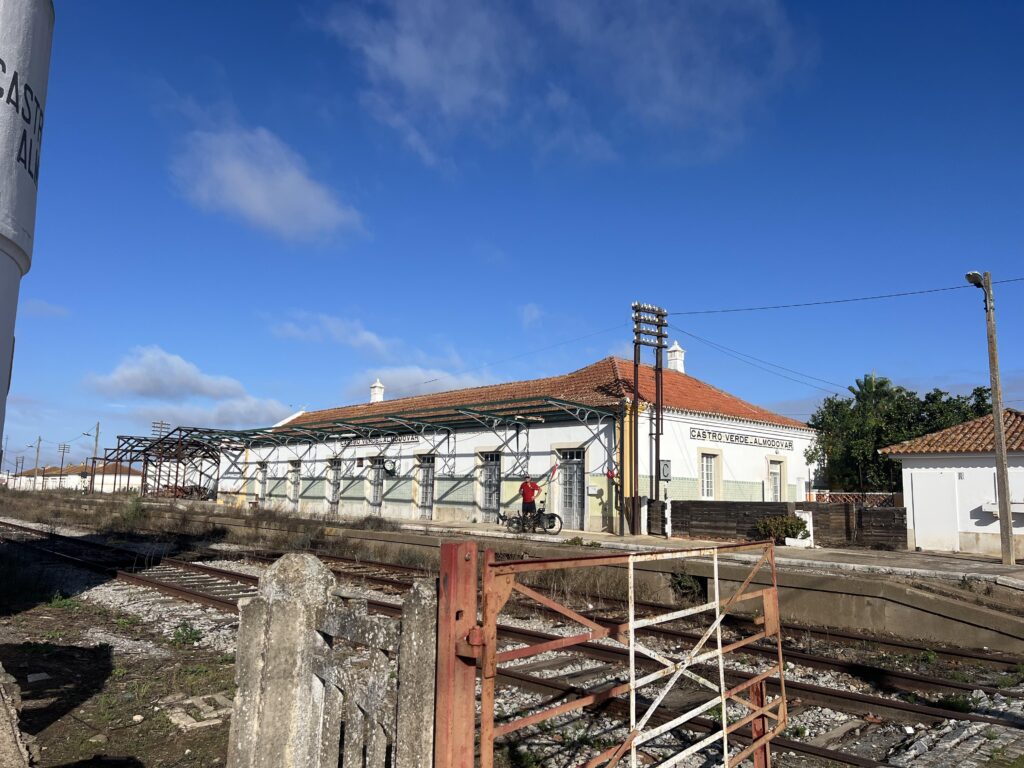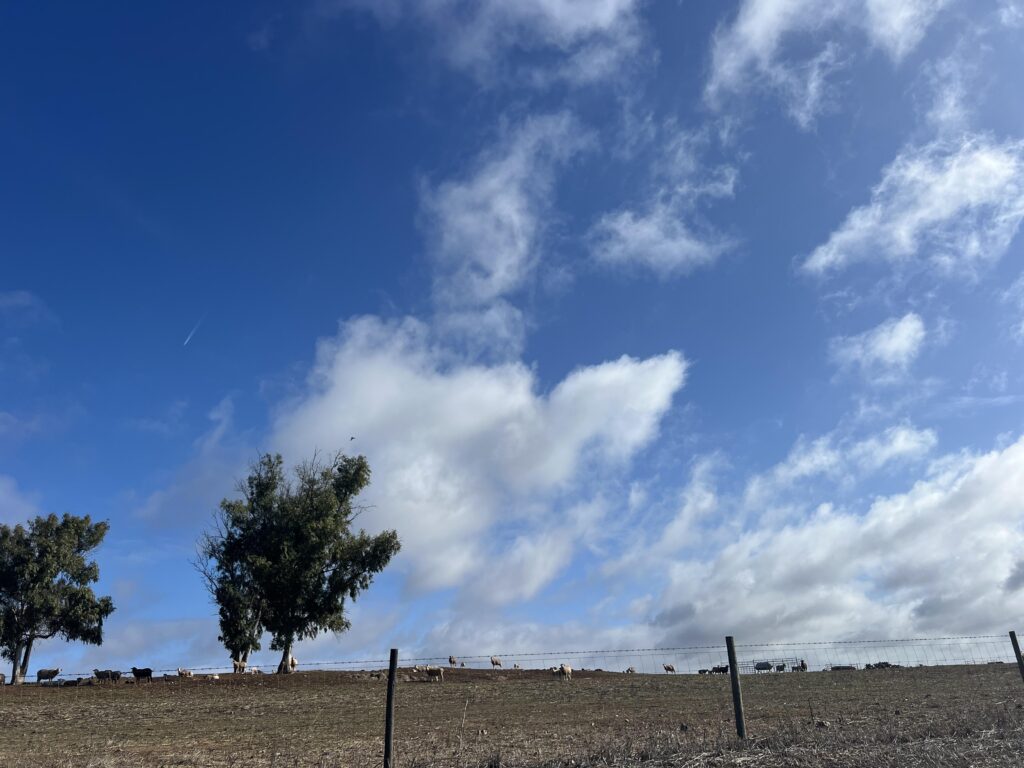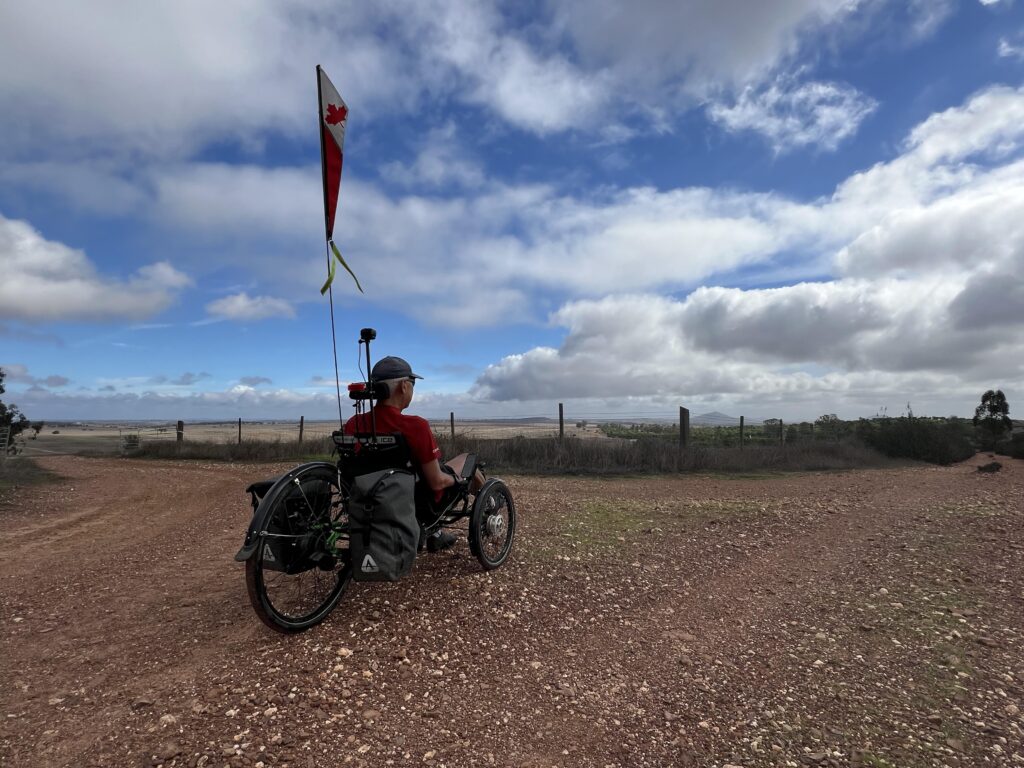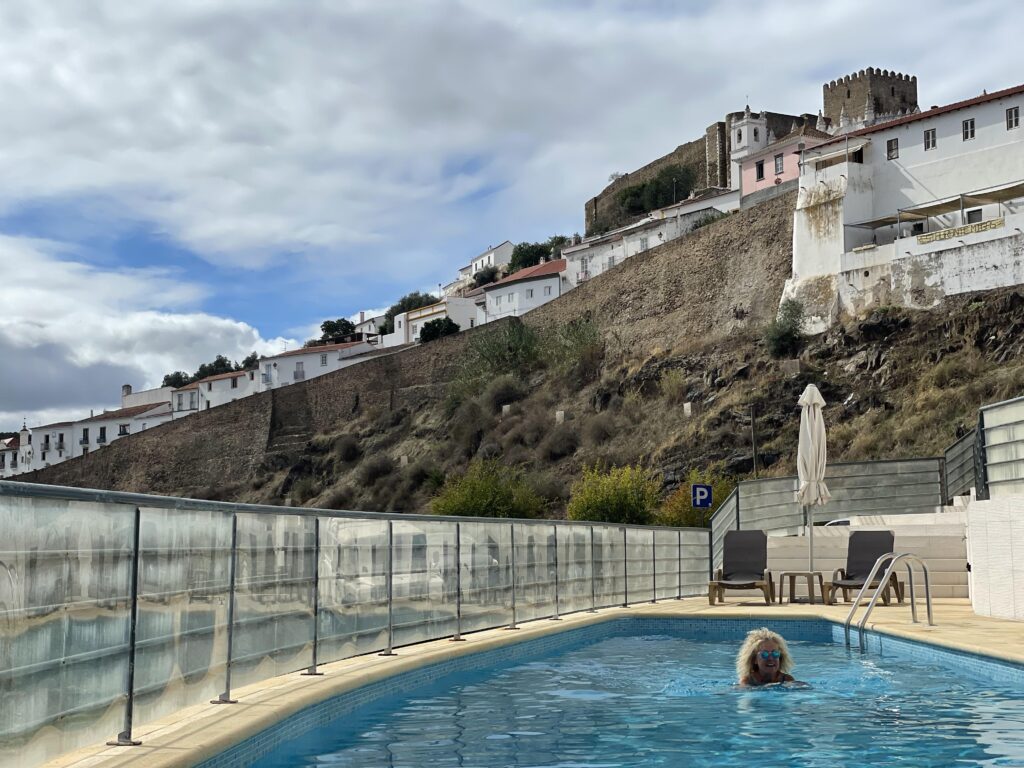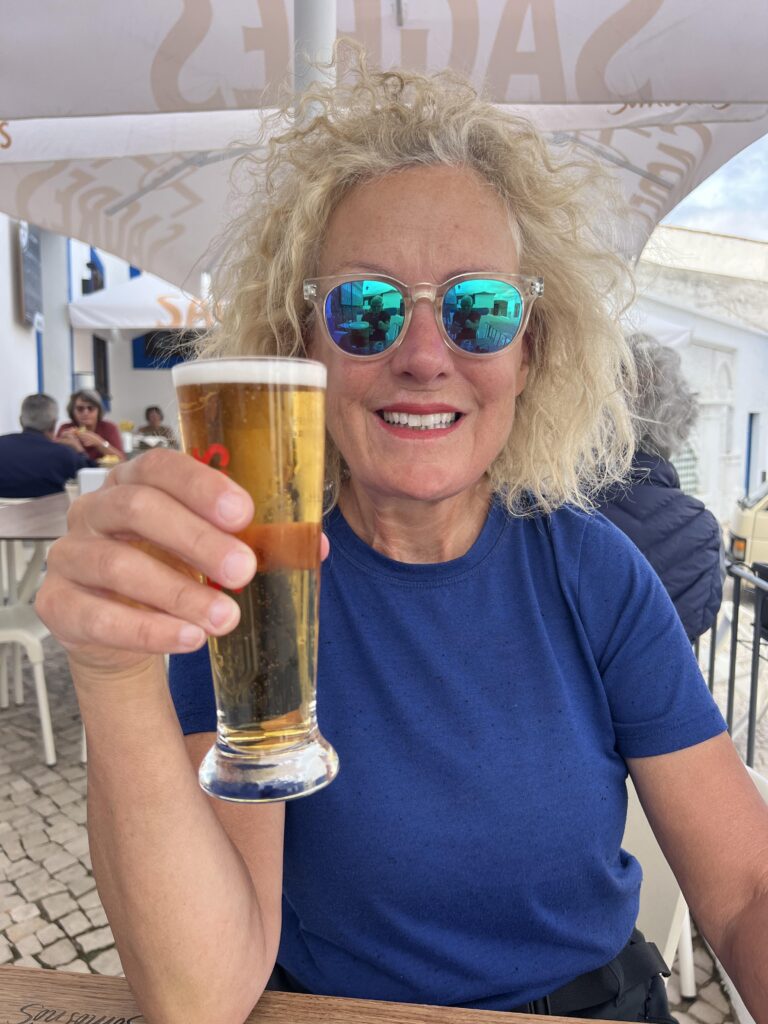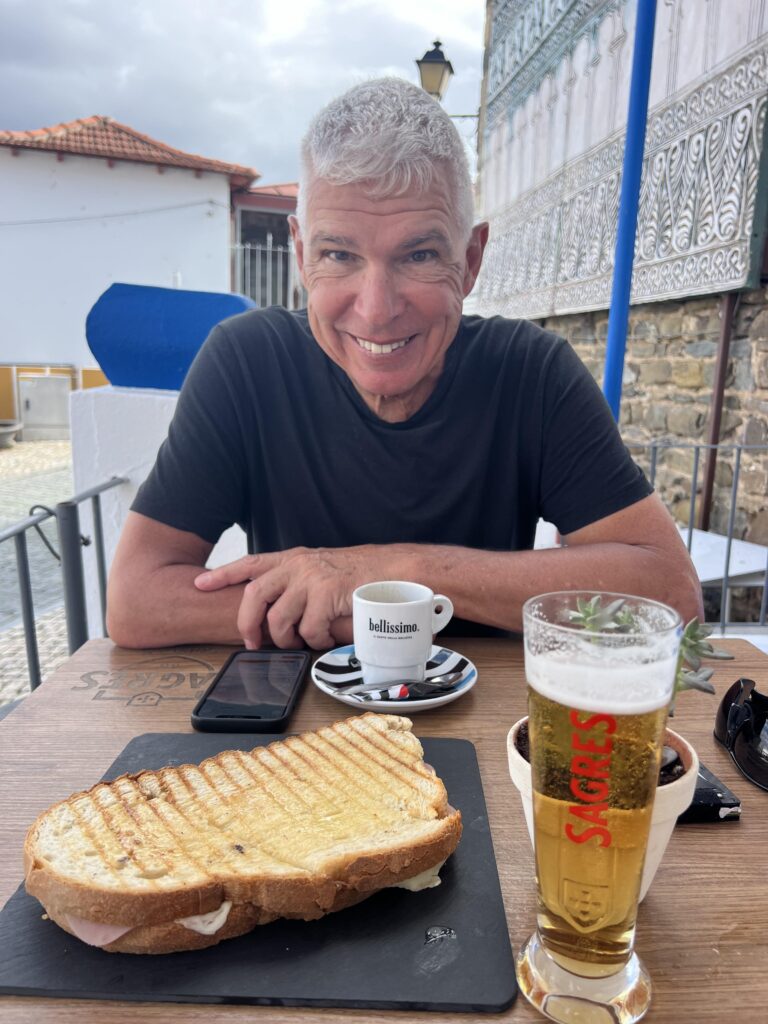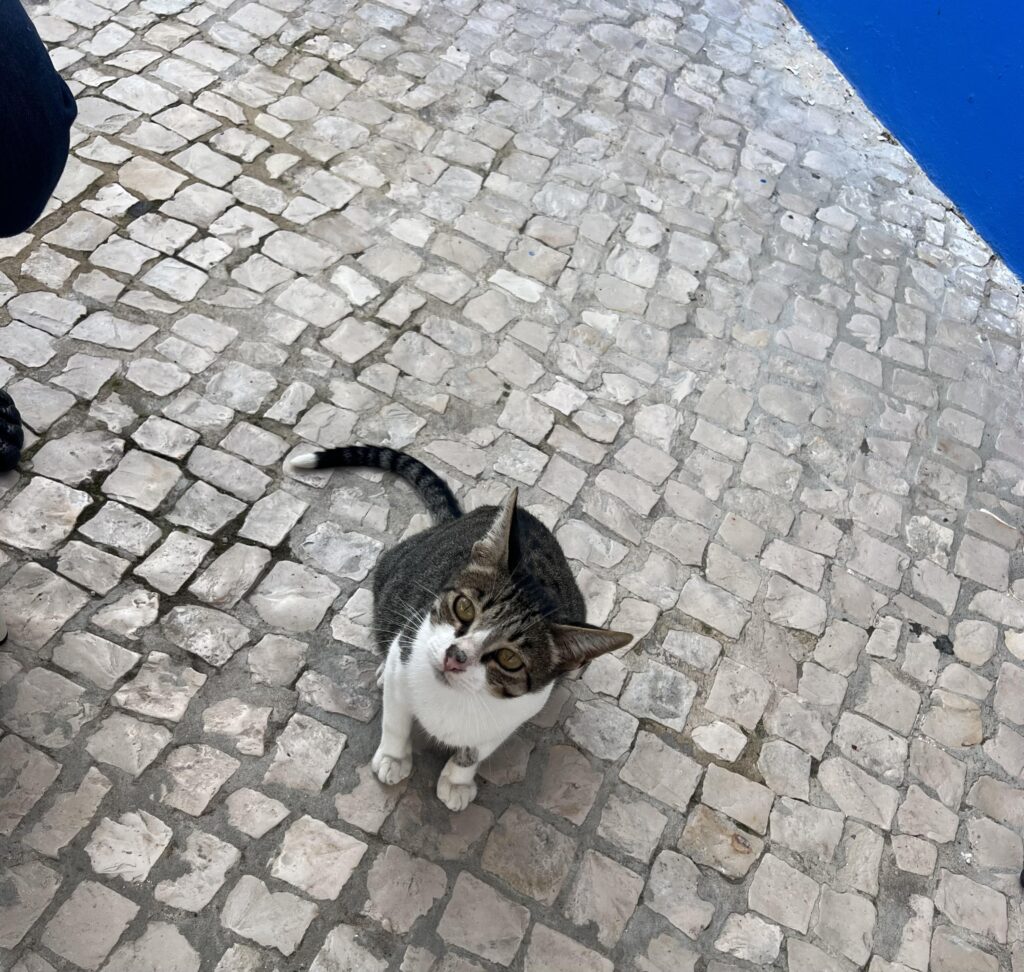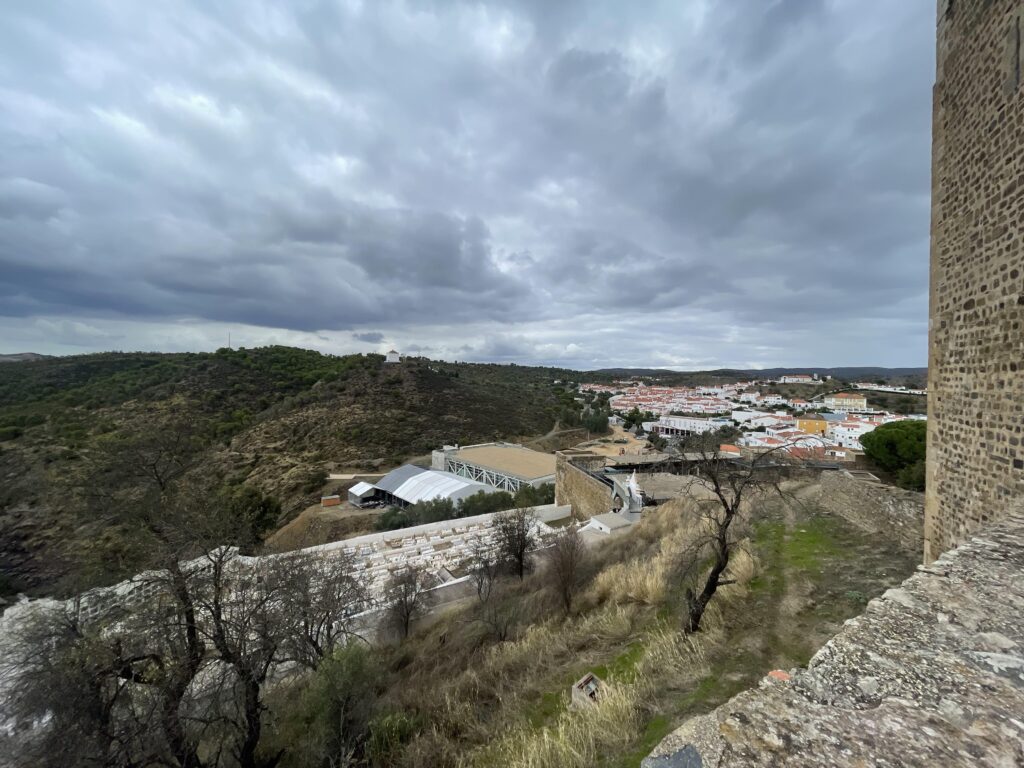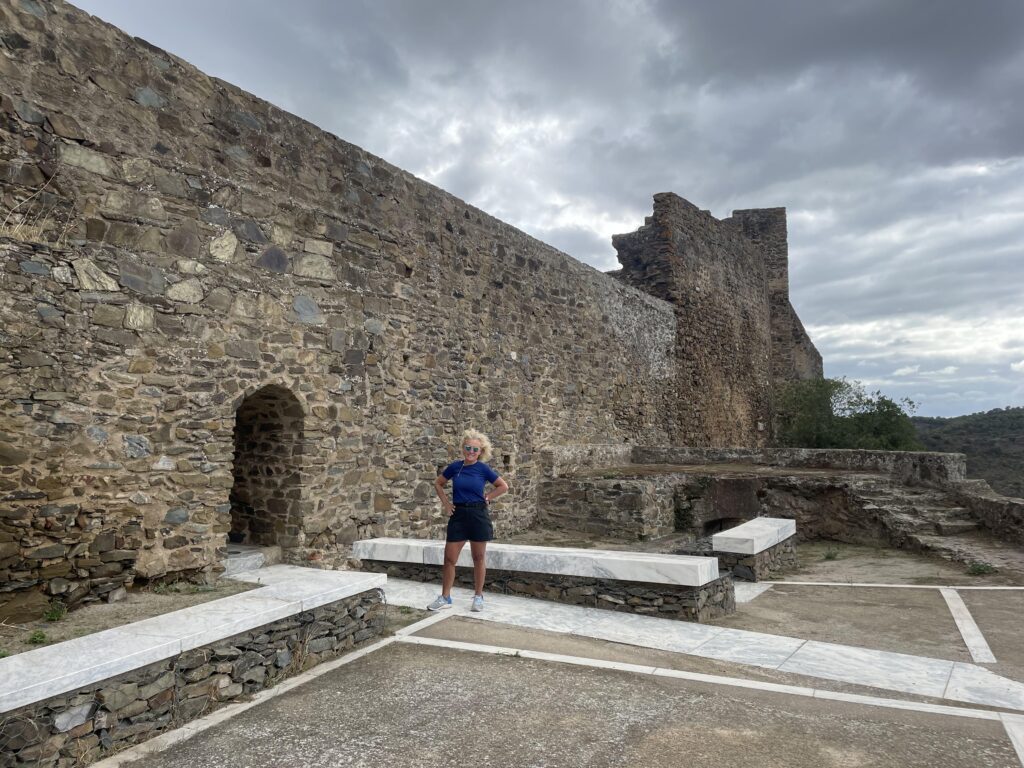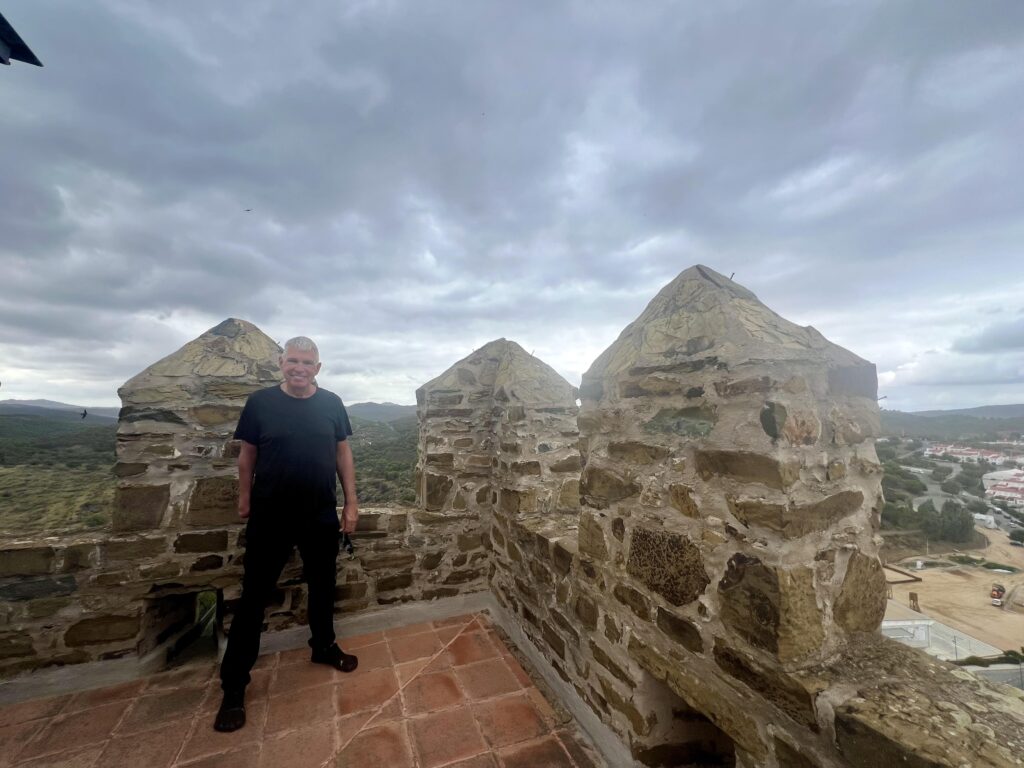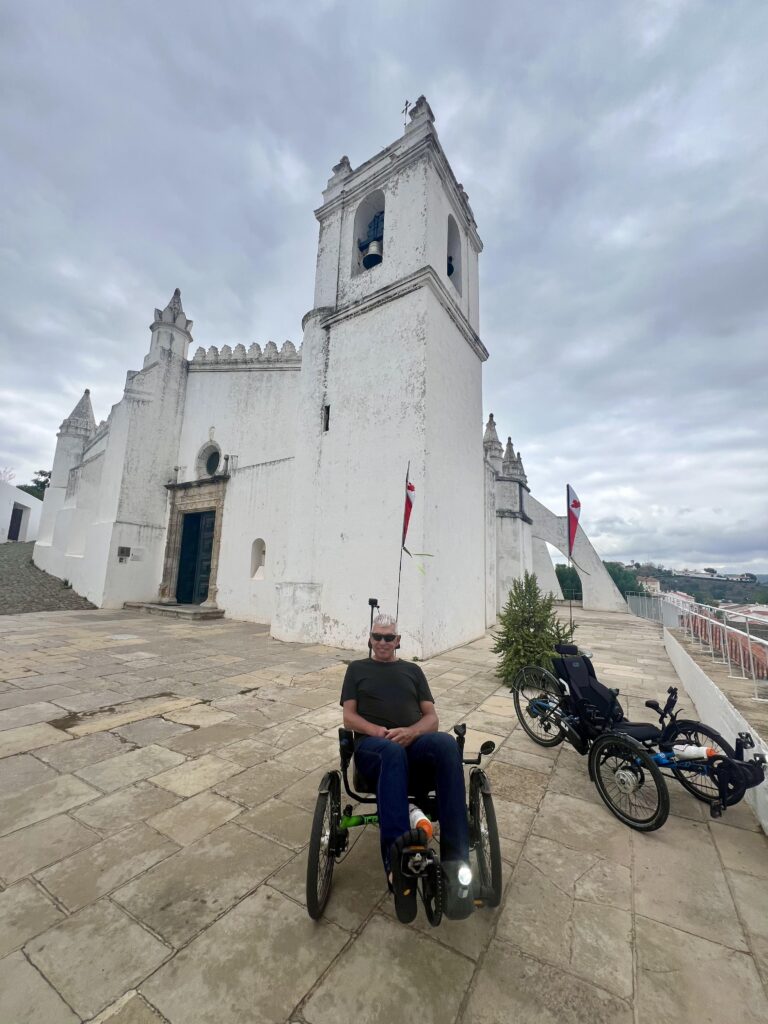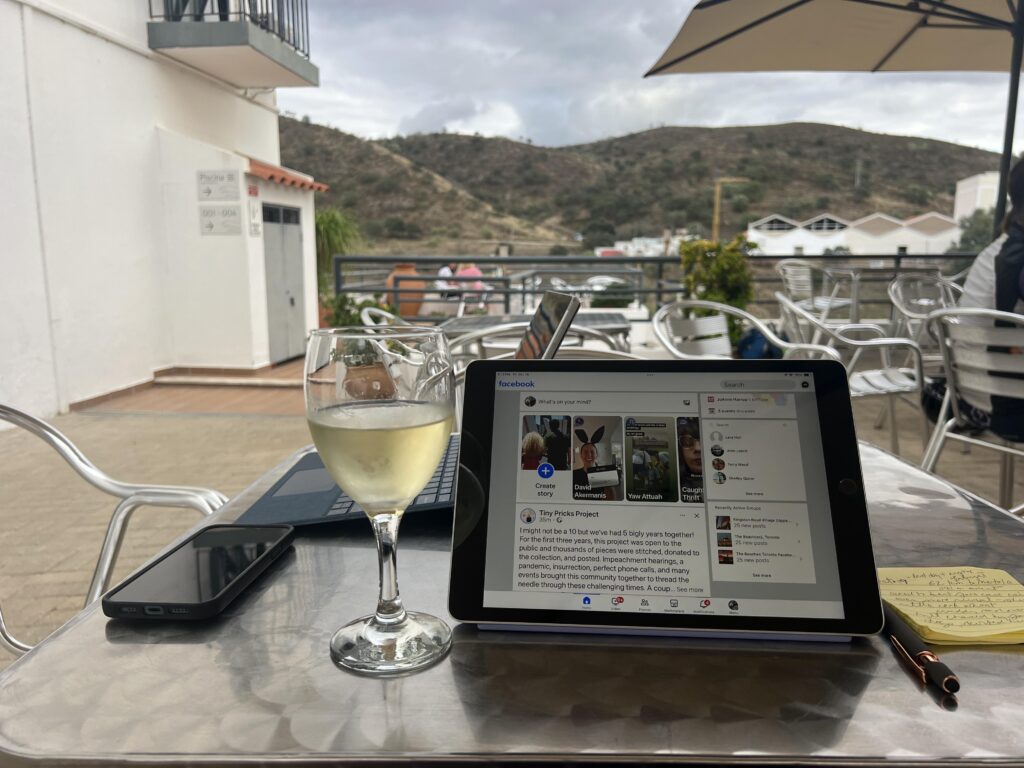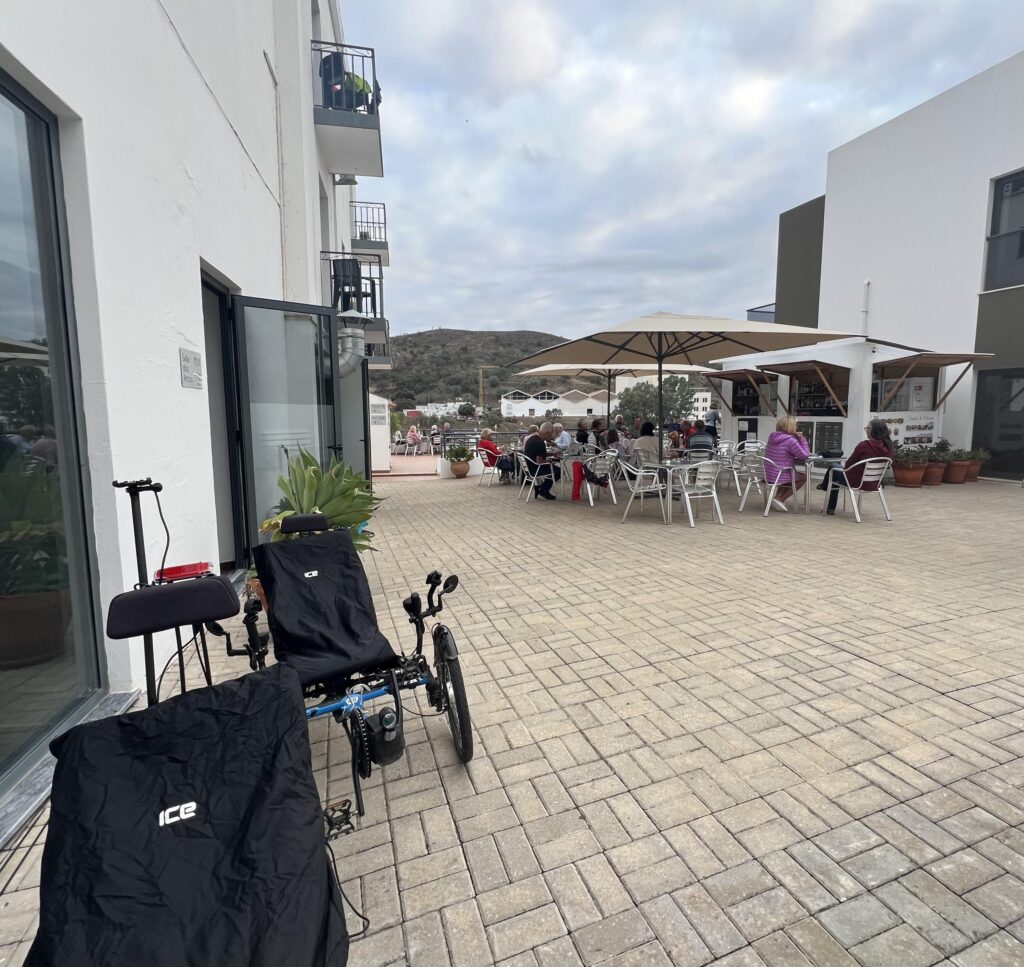On Thursday we had a 2:30 appointment for a mining tour in Aljustrel (Parque Mineiro de Aljustrel) so told ourselves to get up early and hit the road. Ooops – slept in and got away an hour late. As it turned out, all was well. The first twenty minutes of the 65 km ride was a steady downhill, and the balance of the journey was mostly flat through beautiful farm country and pretty small towns. We averaged well over 20 km/h.
We were puzzled by the massive fields of neatly spaced rows of small well manicured trees. While making a movie of these fields John missed a turn. Oops.
It turns out that these are ‘Intensive Olive Farms’. Typical olive groves consist of large well-spaced trees, but the new intensive style offers many efficiencies. Much more density, easy to irrigate, and great opportunities for automation.
We had no idea what the mine tour would be like in Aljustrel, but we were absolutely amazed. Millions of years ago volcanic activity here brought vast amounts of the Earth’s core to the surface. Minerals have been mined in Aljustrel for thousands of years, beginning with copper about 3000 B.C. Copper was ideal because it smelted out of the raw material, pyrite, fairly easily in prehistoric kilns, and was used for tools and jewellery. The Romans improved the techniques and produced iron and sulphur as well as copper. After the Romans left, the Moors and Arabs did not mine, but mining resumed in the 15th Century.
Portugal became the source of blue dye, made by combining copper and sulphur into copper sulphate.
In modern times, the mines modernized, but were subject to fluctuations in the price of copper. The most recent failure was with the fall of the Soviet Union as copper flooded the world markets. Over 1,000 miners lost their jobs in Aljustrel.
Today the mines are busy, extracting the raw material for copper, sulphuric acid, fertilizers and steel.
Our tour guide took us on a 2-1/2 hour walk around the mine site and 30 metres deep into a long tunnel. He showed us the various vibrant colours formed on the walls as the pyrite reacts with air and water. Blue from copper sulphate, green from copper, red from iron, and yellow from sulphur. The tour facility required much removal of the toxic tailings of centuries of mining activity. This tour far exceeded our expectations, with its beautiful facilities (just opened in December 2023), excellent, details and information rich tour, and the proximity to downtown. At one point, most of the men in Aljustrel worked for that mine.
Interesting factoid: many mines feature a men’s chorus, e..g. Cape Breton’s Men of the Deeps, and various choirs in the colliery mines in the UK and Wales. The same goes for Aljustrel. “Luis”, our guide, maintained that this was the case because singing is a good way to purge lungs of the various dusts – silica – inhaled in the mine shafts. Something to think about.
Another factoid: Saint Barbara is the patron saint of miners, artillerymen, and she is the saint one prays to during thunderstorms. (Boom.)
Our hotel in Aljustrel served us fine typical-of-the-region cod and pork cheek meals. All in all, we had a wonderful day 4 of our adventure.
Cycling on Day 5 was relatively uneventful. 62 km from Aljustrel to Mertola. It was to be our last day and evening in Portugal, so a little tinged with sadness. I don’t know when we will be back this way again.
A couple of miscues put us on dirty trails where we were chased – alarmingly – by farm dogs just doing their job, but all was good. The terrain became very hilly, and we arrived in Mertola after miles and miles of cork, olive, lemon trees, and lots of sheep and cattle. Our hotel – Hotel Museu – was built on a series of ruins discovered during its construction. Beautiful, respectful incorporation of ruins into a modern building with a swimming pool that we appreciated after a long day of hills and sunshine.
We popped up (like, way way up) to check out the ruined Castelo Mertola and church and then hustled back to the hotel because it was threatening to rain and the bikes aren’t good at stopping on wet Portuguese cobblestones on steep hills. Back at the hotel we shared the huge terrace with groups of British (a bit loud and swagger-y, t.b.h.) and North American cyclists, caught up on blogs and emails, enjoyed incredibly delicious burgers there overlooking an incredible Guadiara River valley and the rising Hunter’s moon, and called it a night.
